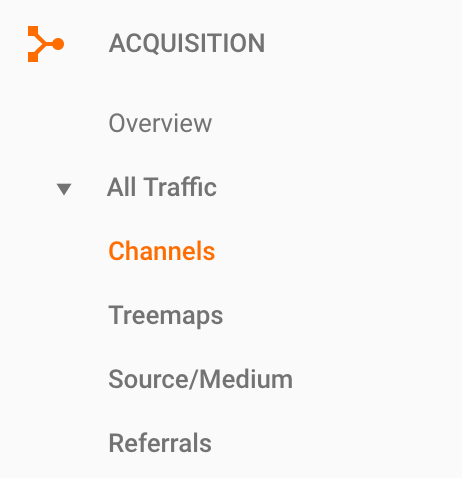Business Strategy & Development, Digital Marketing
“How did you hear about us?”
We all want to know which of our law firm’s digital marketing efforts are working. But if we rely on asking our clients how they heard about us, they may not remember. Or even worse, they may give you the answer of a marketing channel you’re not even using. But you can use some tools to track how your clients are finding you – marketing attribution. With this information, and the metrics we’ve already discussed, cost per client acquisition and client value, you’ll have a much clearer picture of how your law firm’s digital marketing efforts are impacting your law firm..
Why should you track marketing attribution?
If new clients are coming in, why should you even track how they are finding you? Marketing attribution allows law firms to compare different marketing channels and direct their time and budget to the channels that are yielding them the best results. You can plug this information into our free Law Firm Digital Marketing Metric Workbook and see an overall picture of your law firm’s marketing.
And while asking your clients where they found you might sound like a good solution, it’s not always accurate. In fact, a recent neuromarketing study showed that while being shown ads had a significant effect on purchase decision-making, these same decision-makers reported that they were unaware they had been exposed to the ad in the first place.
Each of your clients has a journey
The first step of figuring out how your clients are finding you is understanding the path that they took to find you. We call this the Client Journey and in simplified terms, it can be expressed through the acronym – AIDCA.
Awareness – Prior to this stage of the journey, your potential client may not need you. Or may not realize that they need you. Awareness also refers to your audience knowing about your law firm as an option to fill their current or future needs.
Interest – In this stage, your potential client knows that they need an attorney and is taking active steps in researching their options to find the right attorney for them.
Desire – They may have now narrowed down the list of options to a certain type of attorney, price range, or specialty and have a mental list of what types of attorney they are looking to find.
Conviction – They have decided that you are the right attorney for them!
Action – They take active steps to initiate contact with your law firm through a form on your website or a phone call.
This journey is not always straightforward and can take many twists, turns, forks, and U-turns in the road before finally reaching you. And each potential client may take a different path. Therefore, it’s important that your law firm crafts an integrated law firm digital marketing strategy that has touchpoints with your audience throughout their journey. So, while you may not be able to know definitively where each and every client first found out about you, there are some tools you can use to identify which law firm digital marketing channels are helping your law firm meet its goals.
How are you marketing your law firm?
Now that you understand the client journey, you’ll want to make a list of all the paid and unpaid marketing communications channels that you’re using. Some of these will be more difficult to track attribution for than others. In this post, we’ll look at some of the easier ones to get you started. You can always add more complicated attribution modeling (like algorithmic multi-channel attribution) later.
How clients find you on the web
If you’re using Google Analytics, you’re only a few clicks away from seeing how potential clients are finding you on the web. From your dashboard, look on the left hand side and click on Acquisition. From there, click on All Traffic and then Channels.
On this page, you’ll see a list of the marketing channels that brought visitors to your website. These can include things like –
- Organic Search – Searches that people made for which your site showed up as a non-advertisement result. You can click on this link to see the keywords and phrases your site showed up for.
- Direct – This could be when a user types in your URL directly or from a bookmark. It could also be when Google Analytics cannot determine how the user got to your site.
- Referral – These are the backlinks from other sites that refer to yours.
- Social – Posts you make on sites like LinkedIn, Facebook, and Twitter.
- Paid Search – Searches that people made for which your site showed up as a paid advertisement. You can click on this link to see the keywords and phrases your site showed up for.
Other ways clients can find your law firm
As part of your integrated marketing strategy, you’re using both digital and non-digital marketing sources so you’ll want a way to track those as well. Channels like television and direct mail may be a bit harder to track, but there are a few simple things you can do.
- Tracked phone number – You can include a special phone number that will differentiate calls you receive from each channel.
- Dedicated landing pages – You may also include a URL to a special landing page so you can track visits to your website that were prompted by viewing a particular channel.
- Proximity and annotation – Let’s say one of your attorneys is interviewed on the morning news. You don’t have a special tracked phone number or dedicated landing page for this one-off occasion. But what you can do is include an annotation in your Google Analytics account that tells you when an event occurred. This will allow you to see if there’s an increase in direct or otherwise attributable traffic to your website. Because of this proximity to the event, you can make an educated guess as to whether the event caused them to take action and contact you.
What do I do with this information?
Now that you have all this data, it’s time to put it together with your client data to see how they work together. Between asking your clients how they heard about you, and seeing the actual numbers you’ll be able to make educated decisions about what marketing channels are getting you the most conversions. You can use our free Law Firm Digital Marketing Metric Worksheet to track these numbers and see how they change over time and how they relate to other metrics that you’re tracking.
As you learn more about your clients and their journey, you may want to expand your attribution into more detailed methods that take into consideration how channels interact. Just remember, perfection is not the goal when it comes to marketing attribution. There is no one single secret formula that will tell you the “best” way for you to find clients. But by tracking the channels by which clients are finding your law firm, you will have a better understanding of how to allocate your resources.
Note: This is the 1st article in a 4-part series. Want to read the rest?
- The Marketing Metric You Should Be Tracking (But Probably Aren’t)
- What is a Client’s Value to Your Law Firm?
- You’re here –> How To : Identify How Your Clients are Finding You
- [Coming July 31] Iterating your marketing to maximize your efforts.



